Introduction
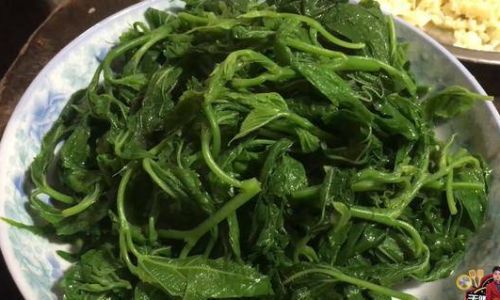
In the vast realm of culinary arts, the exploration of unique and underappreciated ingredients often leads to delightful discoveries. One such gem is the mulberry leaf, a versatile and nutritious plant part traditionally associated with silkworm feeding but increasingly recognized for its culinary potential. While mulberry leaves might not immediately spring to mind when considering what to cook for dinner, their delicate flavor and nutritional benefits make them an excellent addition to various dishes. This article delves into the intricacies of stir-frying mulberry leaves, offering insights on how to transform these humble leaves into a delightful and nutritious meal. We’ll explore the selection process, preparation techniques, cooking methods, seasoning suggestions, and pairing ideas to ensure your mulberry leaf stir-fry is not only tasty but also a feast for the senses.
Section 1: Understanding Mulberry Leaves
Mulberry leaves (Morus alba, Morus nigra, or Morus rubra), belonging to the Moraceae family, are renowned for their significance in sericulture, the practice of raising silkworms. However, their edible qualities have been overshadowed by this industrial use. Rich in vitamins, minerals, antioxidants, and amino acids, mulberry leaves offer a range of health benefits, including improved digestion, enhanced immune function, and potential anti-inflammatory properties. Their slightly sweet, earthy taste pairs well with a variety of flavors, making them an ideal candidate for stir-frying.
1 Selecting the Right Leaves
The first step in creating a successful mulberry leaf stir-fry is selecting the right leaves. Look for fresh, vibrant green leaves with no signs of wilting, discoloration, or pest damage. Ideally, pick leaves from organic mulberry trees to avoid any potential pesticide residues. The younger leaves, typically found at the tips of branches, are more tender and tenderize faster during cooking, making them preferable for stir-fries. If you’re unable to source fresh leaves, frozen or dried mulberry leaves can be used, though they may require additional soaking and rehydration steps.
2 Harvesting and Storage
Harvest mulberry leaves early in the morning when their moisture content is highest, ensuring maximum freshness. Use clean, sharp scissors or pruning shears to avoid damaging the tree. Gather leaves in a breathable container like a paper bag or cloth sack to prevent sweating and maintain freshness. Once home, rinse the leaves thoroughly under cold running water to remove any dirt or debris. Pat them dry with a clean kitchen towel or air-dry them on a paper towel-lined tray. Store fresh leaves in an airtight container lined with paper towels in the refrigerator for up to three days. For longer storage, freeze the leaves after blanching them in boiling water for a minute and then plunging them into ice water to stop the cooking process. Dried mulberry leaves should be stored in an airtight container in a cool, dark place.
Section 2: Preparation Techniques
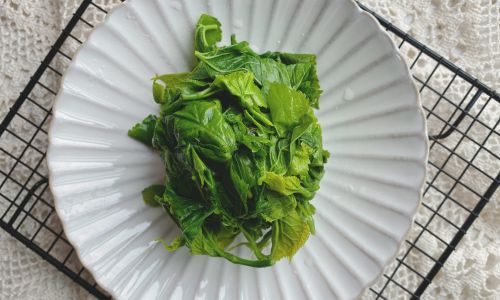
Before diving into the stir-frying process, proper preparation is crucial. This includes washing, trimming, and sometimes blanching the leaves to enhance their texture and flavor.
1 Washing and Trimming
As mentioned earlier, thoroughly wash the mulberry leaves to remove any impurities. Once clean, trim off any stems or tough parts of the leaves using a sharp knife. This not only improves the aesthetics of the dish but also ensures a more uniform cooking time.
2 Blanching (Optional)
Blanching mulberry leaves can help soften them slightly and brighten their color, making them more appealing in stir-fries. To blanch, bring a large pot of salted water to a rolling boil. Add the leaves and cook for about 30 seconds to 1 minute, depending on their tenderness. Immediately plunge the blanched leaves into an ice water bath to stop the cooking process and preserve their vibrant green hue. Drain well before proceeding with the stir-fry.
Section 3: Stir-Frying Mulberry Leaves
Stir-frying mulberry leaves is a quick and efficient way to cook them, retaining their nutrients and flavor. The key to a successful stir-fry lies in the use of high heat, a well-seasoned wok or large skillet, and the right combination of ingredients.
1 Heating the Pan and Oil
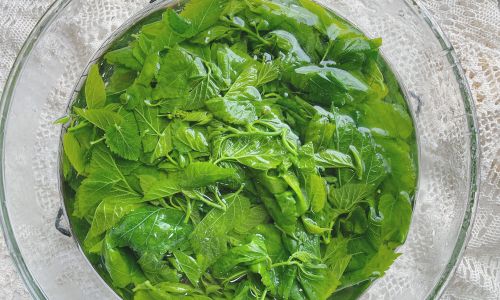
Preheat your wok or skillet over high heat until it’s very hot. Add a tablespoon or two of high-smoking-point oil, such as peanut, sesame, or grapeseed oil. The oil should shimmer but not smoke. This high-heat method ensures that the leaves cook quickly, retaining their crispiness and vibrant color.
2 Adding Aromatics
Once the oil is hot, add aromatic ingredients like minced garlic, sliced ginger, or chopped shallots. These not only flavor the oil but also create a fragrant base for the stir-fry. Stir-fry the aromatics for about 30 seconds until fragrant but not burnt.
3 Stir-Frying the Leaves
Add the prepared mulberry leaves to the hot wok, spreading them out in a single layer if possible. Stir-fry constantly using a spatula or wok spoon to ensure even cooking. The leaves should wilt and turn a brighter green within a minute or two. If using blanched leaves, they will cook even faster.
4 Seasoning and Flavoring
As the leaves cook, season them with salt, a pinch of white pepper, and any other desired spices or herbs. For a traditional Chinese flavor, consider adding a splash of soy sauce, oyster sauce, or hoisin sauce. For a more international twist, experiment with lemon juice, honey, or even a sprinkle of cheese. The key is to balance the mulberry leaves’ natural sweetness with complementary flavors that enhance rather than overpower.
5 Finishing Touches
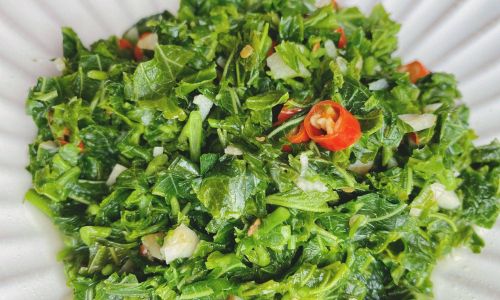
Once the leaves are tender and have absorbed the flavors, remove the wok from heat. Optionally, add a handful of chopped green onions, sesame seeds, or a drizzle of sesame oil for added texture and flavor. Serve immediately to maintain the dish’s crispiness and freshness.
Section 4: Pairing and Serving Suggestions
Mulberry leaf stir-fry is a versatile dish that can be enjoyed on its own or paired with various sides and main courses. Here are some serving suggestions to inspire your culinary creativity.
1 As a Side Dish
Pair mulberry leaf stir-fry with grilled meats, such as chicken, pork, or beef, for a nutritious and flavorful meal. The leaves’ delicate taste complements the richness of grilled proteins, making for a balanced dish.
2 In a Salad
Combine stir-fried mulberry leaves with mixed greens, cherry tomatoes, cucumber slices, and a light vinaigrette for a refreshing and healthy salad. The warm, slightly crispy leaves contrast beautifully with the cool, crisp vegetables.
3 With Noodles or Rice
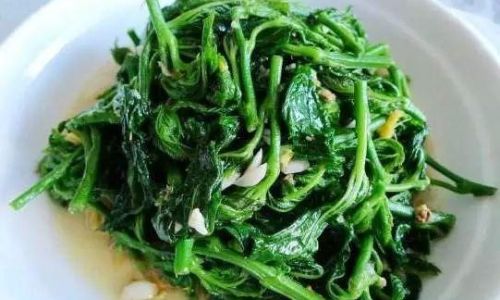
Serve mulberry leaf stir-fry over steamed rice, noodles, or grain bowls for a hearty and satisfying meal. The leaves’ earthy flavor pairs well with the starchiness of rice and noodles, creating a harmonious dish.
4 As a Wrap Filling
Use stir-fried mulberry leaves as a wrap filling along with other ingredients like grilled vegetables, tofu, or shredded chicken. Wrap in rice paper or lettuce leaves for a light and delicious appetizer or meal.
Conclusion
Stir-frying mulberry leaves is a delightful way to explore the culinary potential of this often-overlooked ingredient. By following the steps outlined in this article—from selecting the right leaves to preparing, stir-frying, and pairing them with complementary flavors—you can transform mulberry leaves into a nutritious and delicious dish that will impress even the most discerning palate. As you experiment with different seasonings, cooking techniques, and pairing ideas, remember that the beauty of stir-frying lies in its adaptability and creativity. Happy cooking, and enjoy the unique flavors and textures of mulberry leaf stir-fry!

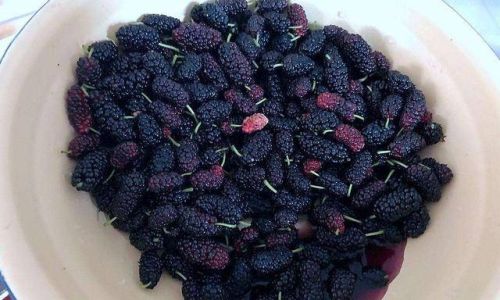

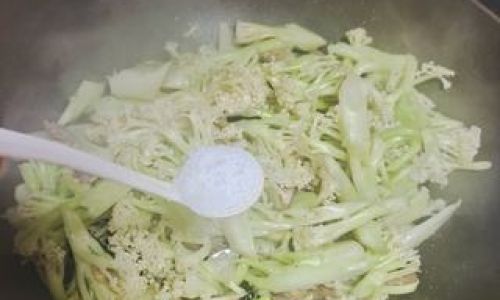
0 comments